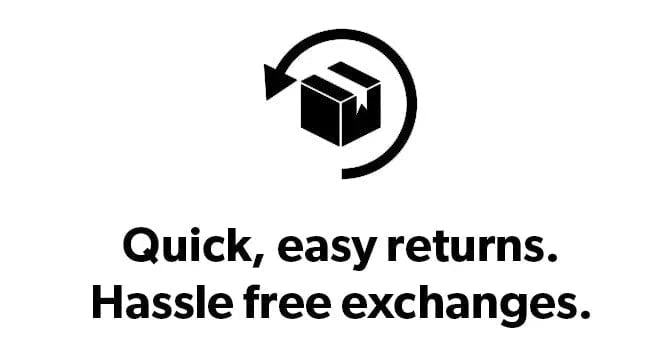Bauer Nexus E50 Pro Junior Hockey Stick
- 8 left in stock
Free Shipping Over $200

Fast Easy Returns

Best Price Promise

Shipping Limited to Canada
Intro & New Features
The Nexus E50 Pro looks to offer some of Bauer’s most elite-level features to up your game to the next level. The second price point comes in at just 420g (SR) and is equipped with an ER Spine, a Hexcell carbon fibre spread tow weave, and a Dualcell bridge core.
Stick Flex Profile
The Nexus line is officially taking the full mid-kick spot of Bauer hockey sticks, which they previously shared with Supreme. A mid-kick is a solid stick for players who often find themselves doing just a bit of everything during the game. The Nexus E50 Pro is ideal for those who want both big shots and a reliable release. The mid kick is made to be versatile in all aspects on the ice.
Shaft Construction & Stiffness
A big contributor to the overall weight reduction is the new use of a Hexcel carbon spread tow weave at this price point. This weave technique is incredibly strong and lightweight, keeping the stick at 420g at the senior level. This weave has been applied to both the shaft and the blade.
For this iteration of Nexus sticks, Bauer has elected to include their ER spine technology across all levels, from pro to recreational. This is because the line emphasizes control and power, and the ER spine—a hexagonal shaft geometry—has always been a major contributor to that characteristic at the highest level. Bauer’s commitment to enhancing the play of all players across all levels has made the inclusion of this tech natural into the new Nexus line.
Blade Construction
In addition to the Hexcel carbon in the blade, the stick also now uses Bauer’s Dualcell bridge core technology. This tech involves dual-density foams in the core, with softer foam on the bottom and lighter foam on the top. The setup makes it easier to handle while enhancing the overall feel of the stick as you play.
Graphics
The E50 Pro sticks to the classic black and blue of the Nexus line, with the addition of copper accents near the top with the Nexus and E50 Pro logos. Over the bottom half of the shaft, the carbon fibre weave is visible.
Grip
The E50 Pro uses a soft gloss grip, which works well with the ER Spine to balance control and freedom of movement for your hand.
Blade Patterns, Flex & Stick Length
The Bauer Nexus E50 Pro Junior Hockey Stick is available in the following blade patterns: P92 and P28.
P92 is the best blade pattern for all-around play, with a mid-curve style. It is great at handling the puck in small spaces, including face-offs.
P28 is a much more aggressive stick pattern, used often by elite players. This blade curve specializes in quick and accurate shots, but it can be a bit difficult to get used to since it is also very good at raising the puck.
50 Flex (P92, P28), L/R - 54”
40 Flex (P92, P28), L/R - 52”
Intro & New Features
The Nexus E50 Pro looks to offer some of Bauer’s most elite-level features to up your game to the next level. The second price point comes in at just 420g (SR) and is equipped with an ER Spine, a Hexcell carbon fibre spread tow weave, and a Dualcell bridge core.
Stick Flex Profile
The Nexus line is officially taking the full mid-kick spot of Bauer hockey sticks, which they previously shared with Supreme. A mid-kick is a solid stick for players who often find themselves doing just a bit of everything during the game. The Nexus E50 Pro is ideal for those who want both big shots and a reliable release. The mid kick is made to be versatile in all aspects on the ice.
Shaft Construction & Stiffness
A big contributor to the overall weight reduction is the new use of a Hexcel carbon spread tow weave at this price point. This weave technique is incredibly strong and lightweight, keeping the stick at 420g at the senior level. This weave has been applied to both the shaft and the blade.
For this iteration of Nexus sticks, Bauer has elected to include their ER spine technology across all levels, from pro to recreational. This is because the line emphasizes control and power, and the ER spine—a hexagonal shaft geometry—has always been a major contributor to that characteristic at the highest level. Bauer’s commitment to enhancing the play of all players across all levels has made the inclusion of this tech natural into the new Nexus line.
Blade Construction
In addition to the Hexcel carbon in the blade, the stick also now uses Bauer’s Dualcell bridge core technology. This tech involves dual-density foams in the core, with softer foam on the bottom and lighter foam on the top. The setup makes it easier to handle while enhancing the overall feel of the stick as you play.
Graphics
The E50 Pro sticks to the classic black and blue of the Nexus line, with the addition of copper accents near the top with the Nexus and E50 Pro logos. Over the bottom half of the shaft, the carbon fibre weave is visible.
Grip
The E50 Pro uses a soft gloss grip, which works well with the ER Spine to balance control and freedom of movement for your hand.
Blade Patterns, Flex & Stick Length
The Bauer Nexus E50 Pro Junior Hockey Stick is available in the following blade patterns: P92 and P28.
P92 is the best blade pattern for all-around play, with a mid-curve style. It is great at handling the puck in small spaces, including face-offs.
P28 is a much more aggressive stick pattern, used often by elite players. This blade curve specializes in quick and accurate shots, but it can be a bit difficult to get used to since it is also very good at raising the puck.
50 Flex (P92, P28), L/R - 54”
40 Flex (P92, P28), L/R - 52”
| Features | Description |
|---|---|
| Level | Elite |
| Flex Point | Mid Kick Point |
| Shaft Construction | ER Spine | UD Carbon |
| Blade Construction | Dualcell Bridgecore | Hexcell Carbon |
| Material | Hexcell Carbon |
| Length | 52" , 54" |
| Grip | Soft Gloss |
| Blade Patterns | P28 , P92 |
| Warranty | 30 Days |
Curve Comparison Chart
Curves, or blade patterns, play a large part in a hockey player's game when it comes to sticks. The right curve enhances shooting, passing, and stickhandling, so finding what works best for you is crucial.
| Click links below to view blade patterns. | |||
P29 | P92, P92M | W03 | TC2, TC2.5 |
P88 | P88 | W88 | IC, MC, MC3 |
P28 | P28 | W28 | TC4 |
P30 | P14 | W71 | T1, T3, T5 |
- | PM9 | - | MC2 |
P20, P05 | - | W05 | HCS, HCR |
P90TM | P90TM | - | - |
Hockey Player Stick Sizing & Information Guide
Selecting the right stick for you.
When it comes to sizing a Hockey Stick, the length tends to be a preference. Sticks come in Senior, Intermediate, Junior and Youth lengths with corresponding flex options. You will need to consider your weight and height or the person you are buying for in order to choose the correct size. Intermediate, Junior, and Youth hockey sticks will have smaller shaft dimensions, making them easier for young players to hold and control.
A stick can always be cut down in length, and will usually be cut down for kids. However, selecting a hockey stock too long in length or the wrong flex can hinder performance. For kids, junior, intermediate and senior all come in roughly standards length. In some cases, each Junior flex will be a different length of stick. Look at each and compare the height of the player you are buying for.
Flex can be tricky to pick as every hockey player is different and has their own preference. You can think of flex numbers as pounds of force. Having too stiff or too whippy a stick can hinder performance in their own ways.
Personalizing your stick length.
As mentioned before, length is very much personal preference. To determine a benchmark height, stand with your shoes off and the stick against your body with the toe on the ground. As a general rule of thumb we recommend sticks to come up to between your mouth and nose. For kids, or players who are still growing, the maximum height we recommend is eye level.
Mark the shaft of the stick where the height is desired and cut it down to length. Make sure to re-insert the plug from the top to prevent an open composite end at the top of your stick.
When cutting a stick down, keep in mind that the shorter you cut a stick, the stiffer it becomes. As a general rule, a stick increases 3% in stiffness for every inch cut off. If you are unsure how much you want to cut off, take the least amount first so that you can always cut more if necessary. Cutting the stick multiple times will not affect the sticks construction.
Information to Consider
Flex Options
Players want to be able to fully flex the stick. If a stick is too soft, the resulting shot will be inaccurate and weak. If a stick is too stiff, there will be no power behind the shot. Think of the flex number as pounds of force. This is the number of pounds that need to be put into the stick to fully flex it.
Curve Options
In most cases, sticks are offered in multiple blade curve pattern options. Please refer to our blade pattern charts for more information regarding the patterns available.
Kick Point Options
A Mid-kick stick will have a stiffer taper so that it flexes more in the middle of the shaft. These sticks have a longer loading time but offer a more powerful shot, perfect for players taking a lot of slap shots.
A Low-kick stick will have a stiffer middle of the shaft and softer taper so that it flexes at the bottom of the shaft closer to the blade. These sticks will have a much quicker release perfect for quick snap shots and writs shots.















